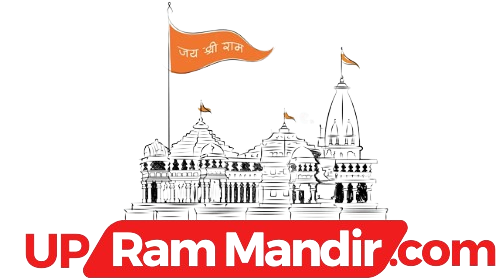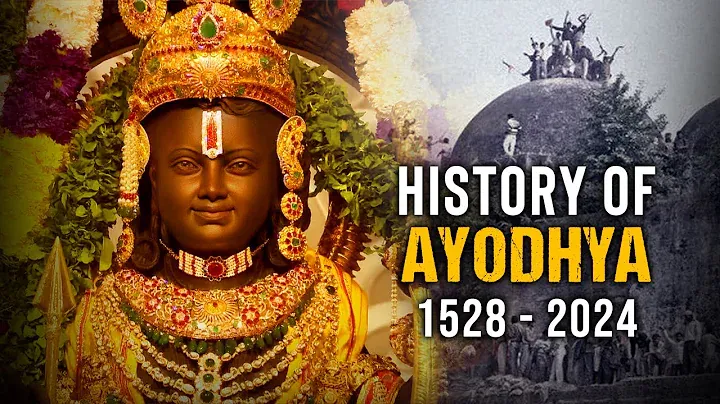Ayodhya is a state known for its rich religion and temples, and today we are talking about one of the most important parts of the Hindu temple, which is known as Ayodhya Ram Mandir, which is located in Ayodhya, Uttar Pradesh, is the center of attraction for the longest period for every Hindu across the world. Huge preparations were made for the opening ceremony, and almost Rs. 1800 crores were spent on the construction of Ayodhya Ram Mandir. Nearly 8000 people were invited to the Up Ram Mandir opening ceremony.
Ayodhya Ram Mandir History 1528 to 2024
All the big politicians and celebrities were part of the Ayodhya Ram Mandir Pran Pratishtha. All the Hindus all across the world welcomed Lord Ram to his temple after a long time. According to Hindu religious belief, Ayodhya is the birthplace of Lord Ram, who was the seventh Avatar of Lord Vishnu. According to the Ramayana, Lord Ram’s birthplace is on the Sarayu River in the city of Ayodhya, and Hindu gurus and saints also claim that this is the birthplace of Lord Ram. The Ayodhya Ram Mandir construction started in August 2020 and was completed in January 2024.
Key Points
- Significance of Ayodhya in Hindu religion
- Overview of Ram Mandir in Ayodhya
- Importance of the temple for Hindus worldwide
- Cost and scale of construction
Inauguration Ceremony: Choosing January 22
In the Hindu Calendar, January 22 is the day of Kurma Dwadashi, when lord Vishnu took the avatar of a tortoise during the Sagar Manthan because lord Ram is an avatar of lord Vishnu, so the day of January 22 was used for the inauguration ceremony. That ceremony was called Paran Parthista. This ceremony occurs when a new temple is about to be built or a new idol is placed in a temple.
Key Points
- Explanation of Kurma Dwadashi in the Hindu calendar
- The connection between Kurma Dwadashi and Lord Ram’s avatar
- Description of the Paran Pratishtha ceremony
Phases of Construction and Future Plans
The second phase of the temple will be completed in December 2024, when the first and second floors will be completed, and engraving on 360 pillars of the temple will be completed. The third phase will occur when all the structures, like the auditorium, which will be built on 70 acres of land, are met.
Key Points
- Details about the ongoing construction phases
- Completion timeline for the temple
- Planned structures on the temple premises
History of Babri Masjid and Ram Mandir
In 1528, Babar, the founder of the Mughal Empire, built a Masjid in Ayodhya, which was then called Babri Masjid, but the Masjid was constructed over the distribution of a temple. In the 18th Century, the Jesuit missionary Joseph Tiefanthaler visited Ayodhya and wrote a book about it. He mentions that the fort associated with lord Ram was demolished, and a Mosque was constructed. Governor General Lord Wellesley had a surgeon named Francis Buchanan. In 1810, he noted the existence of a temple dedicated to Ram and how a Masjid replaced it.
Key Points
- Overview of Babri Masjid’s construction
- Historical accounts of the temple-Masjid conflict
- British colonial involvement
Significant Events Leading to Ayodhya Ram Mandir’s Construction
An Anglo-Irish author, Robert Montgomery, who travelled to India in the early 17th Century, mentions in his book the destruction of a temple and the construction of a Mosque. But the actual conflict started in the 1850s. Hindus started claiming the place where Babri Masjid was built as their own, and Britishers took the chance to create a chose in between the Hindus and Muslims. After a few years, Hindus and Muslims prayed at the same location without much problem. But Hindus wanted to build a small Ram temple, and then Muslims abandoned it. So in 1885, a person named Mahant Raghubir Das submitted a request in the Faziyabad court seeking permission to build a small shelter kind of temple on Ramchabutra, and the judge stated that it was unfortunate that the Masjid was built on land that was sacred to Hindus.
Key Points
- The emergence of Ram idol in 1949
- Ram Janmabhoomi movement in the 1980s
- Political developments under Kalyan Singh’s tenure
Demolition of Babri Masjid and Legal Ramifications
On the night of December 22, 1949, out of nowhere, the idol of Ram emerged inside the Mosque, and then Hindus climbed that the idol appeared magically with the grace of lord Ram. Both Parties approach to the court. Again, in 1984, things started getting serious when the Vishwa Hindu Parishad Committee started a comparison called the Ram Janmabhooi movement. In 1991, BJP party minister Kalyan Singh came to power, and things started taking a serious turn. Kalyan Singh publicly supported the construction of Ayodhya Ram Mandir next to Babri Masjid and helped acquire 2.77 acres of land.
Key Points
- Description of the 1992 Demolition Incident
- Government response and inquiry commissions
- Legal proceedings and court judgments
Allahabad High Court’s 2010 judgment
On November 6, 1992, BJP, Vishwa Hindu Parishad, and their followers rallied in the disputed area. There were approx 1.5 lakh volunteers, but the security and management were so poor that the campaign became violent. Within 2 hrs of the rally, young guys climbed to the top of the Mosque and hosted the saffron flag. After this incident, people were murdered in different cities, and the count of killed people was huge. On December 16, 1992, the central congress government, headed by Narasimha Rao, set up an inquiry commission. After that, the court passed the Ayodhya Acquisition Act of 1993. Then, in 2003, as per the order of the Allahabad High Court, the Archaeological Survey of India started digging the disputed land.
Key Points
- Allahabad High Court’s 2010 judgment
- Supreme Court’s final verdict in 2019
- Reflection on the centuries-old dispute and its resolution
Judicial Resolutions and Conclusion
In 2010, the Allahabad High Court delivered its judgment under the Ayodhya Ram Mandir case. It divided the disputed land into three parts: 1/3 for the Sunni waqf board, 1/3 for a religious group called Nirmohi Akhara, and 1/3 for the Ram lalla Virajman. On November 9, 2009, the Supreme Court gave its judgment. It is to hand over the land to the trust to build a Ram Janma Bhoomi or Ram Mandir and for Muslims to give 5 acres of the land in another place to build their Mosque. And that’s how the battle that started 500 years ago ended.


3 thoughts on “Ayodhya Ram Mandir History: From 1528 to 2024 – Journey, Conflict & Resolution!”